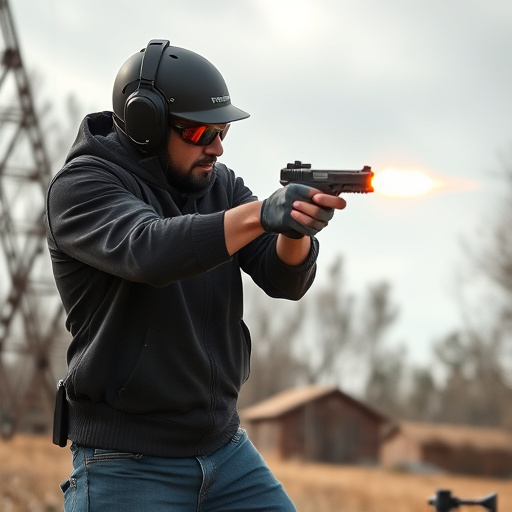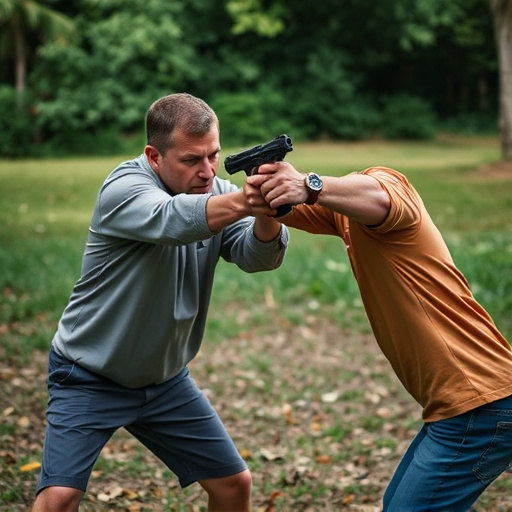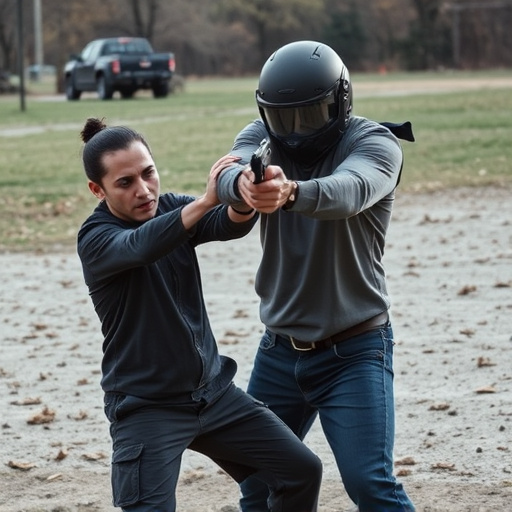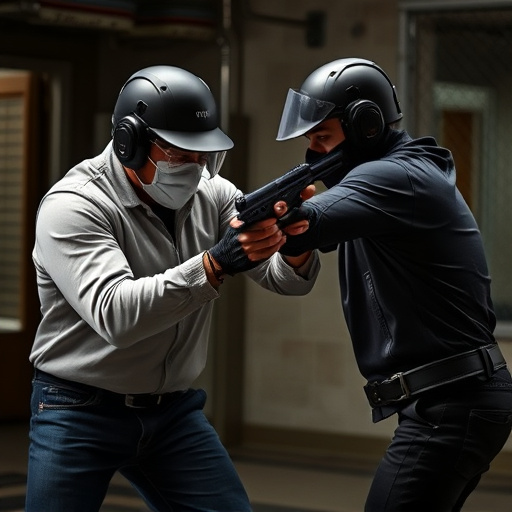Stun guns disrupt the nervous system, causing temporary muscle incapacitation. Their effectiveness and duration depend on factors like device power, target body area, and individual physical characteristics. Mythical recovery times are often exaggerated; immediate medical attention is usually not necessary. When choosing a best-rated stun gun for self-defense, consider high voltage, bright LED flash, loud alarm, ergonomic design, automatic activation, and waterproof ratings. Understand the legal status and safety guidelines of stun guns in your region to ensure responsible use.
“Uncover the shocking truth about muscle incapacitation from stun guns—a vital topic for anyone considering self-defense. This comprehensive guide explores the science behind stun gun effectiveness, focusing on the duration of muscle paralysis. From understanding the physical response to identifying key factors influencing downtime, we demystify recovery times. Additionally, we review top-rated stun guns for self-defense, highlighting essential features. Learn about legal considerations and safety tips to empower yourself with knowledge in this increasingly popular realm of personal protection.”
- Understanding Muscle Incapacitation: What Happens When You're Stun-Gunned?
- Factors Affecting Duration of Muscle Paralysis from Stun Guns
- Debunking Myths: How Long Does It Really Take to Recover?
- Choosing the Best-Rated Stun Gun for Self-Defense: Key Features to Consider
- Legal Implications and Safety Tips When Using Stun Guns for Protection
Understanding Muscle Incapacitation: What Happens When You're Stun-Gunned?

When someone is hit with a stun gun, the device delivers an electric current that disrupts the nervous system’s control over muscle movement. This interruption causes involuntary contractions and relaxation of muscles, leading to temporary incapacitation. The duration of this muscle incapacitation varies based on several factors including the power output of the stun gun, the target’s body type, clothing, and their general physical condition.
Stun guns are designed to render an attacker temporarily defenseless, allowing the victim time to escape or call for help. High-quality, best-rated stun guns for self-defense typically deliver powerful enough jolts to incapacitate a person for several minutes, providing an effective means of self-protection in various situations. Understanding what happens at the physiological level when you’re hit with a stun gun can enhance your appreciation for these devices’ capabilities and limitations.
Factors Affecting Duration of Muscle Paralysis from Stun Guns

The duration of muscle incapacitation from stun guns varies greatly and is influenced by several factors. One key factor is the power output of the device, with higher voltage typically leading to longer durations of paralysis. Best-rated stun guns for self-defense often have advanced technologies that enhance their effectiveness, ensuring a more prolonged period of immobilization.
Another significant consideration is the area targeted by the stun gun. The nervous system plays a crucial role in muscle control, so striking vital areas like the legs or arms can extend the duration of incapacity. Additionally, individual differences in body composition, muscle mass, and overall health can impact how long a person remains paralyzed after being stunned, further emphasizing the importance of choosing an effective self-defense tool, such as those rated highest in the market.
Debunking Myths: How Long Does It Really Take to Recover?

Many myths surround the recovery time from stun gun incapacitation, often perpetuated by dramatic portrayals in media. It’s important to understand that the reality is far less dramatic than what you might see in movies or on TV. The duration of muscle incapacitation varies widely and depends on several factors, not just the power output of the stun gun.
In general, the effects of a stun gun are temporary, with recovery times ranging from 15 minutes to an hour or so. The best-rated stun guns for self-defense typically deliver strong jolts designed to disrupt muscle control momentarily, not cause prolonged paralysis. Immediate medical attention is rare and unnecessary for most users, especially those with basic training in hand-to-hand combat or self-defense tactics. Debunking these myths empowers individuals to better understand the capabilities and limitations of stun guns, enabling them to make informed decisions regarding personal safety.
Choosing the Best-Rated Stun Gun for Self-Defense: Key Features to Consider

When selecting a stun gun for self-defense, prioritizing features that ensure effectiveness and reliability is paramount. The best-rated stun guns for self-defense often boast high voltage outputs, typically ranging from 30,000 to 120,000 volts, which are powerful enough to temporarily incapacitate an assailant while providing users with a crucial moment to escape or summon help. Additionally, features like a bright LED flash and a loud alarm system enhance the device’s deterrence factor, making it more effective in high-stress situations.
Key considerations also include weight and size for easy carry, a durable yet ergonomic design for comfortable use, and automatic activation mechanisms that ensure responsiveness when needed. Waterproof ratings are another valuable asset, as they provide protection against accidental damage from rain or other environmental factors. User reviews and certifications from reputable organizations can guide your decision, ensuring you choose a stun gun with proven performance and safety standards.
Legal Implications and Safety Tips When Using Stun Guns for Protection

When considering stun guns as a means of personal protection, understanding their muscle incapacitation duration and legal implications is crucial. The use of stun guns for self-defense varies significantly across jurisdictions, with some areas permitting their use only by law enforcement or in specific circumstances, while others allow citizens to carry them for personal safety. It’s essential to research and comply with local laws to avoid legal repercussions.
Safety tips are also vital when handling stun guns. Users should be trained on the device’s proper deployment techniques and aware of its limitations. Stun guns are not foolproof; factors like range, weather conditions, and target size can affect their effectiveness. Always aim for non-lethal zones to minimize harm to bystanders and ensure that you’re using the best-rated stun guns for self-defense in compliance with safety guidelines.
In conclusion, understanding muscle incapacitation from stun guns involves recognizing the complex interplay of factors affecting duration. Debunking myths is crucial to ensuring accurate recovery timelines. When selecting a self-defense tool, choosing among the best-rated stun guns is essential, considering key features for effectiveness and safety. Always stay informed about legal implications and follow safety tips to ensure responsible use.
